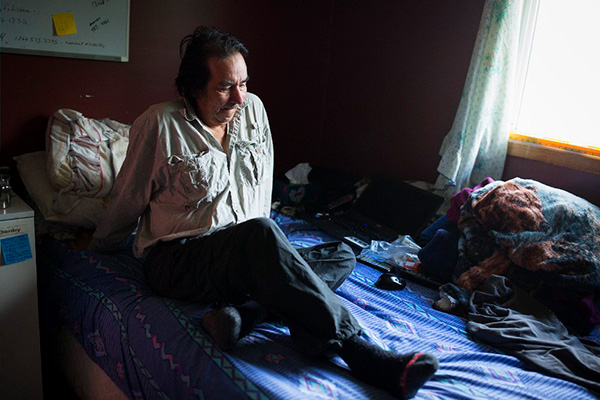2018 Canadian Hillman Prize Winner

The story of mercury poisoning in Grassy Narrows is not a new one. In the 1960s and 70s, a pulp and paper mill dumped 10 tonnes of the neurotoxin into the English River that is the lifeblood of Grassy Narrows and neighbouring Whitedog First Nations in Ontario. A five-part London Free Press series on the original industrial dumping and environmental and health tragedy won the Michener Award in 1975.
In the intervening years, when sick community elders said they believed the mercury was continuing to poison them and their children, they were largely ignored. Federal and provincial officials repeatedly stated that there was no ongoing source of mercury leeching into the waterways. Despite residents’ continuing complaints of neurological problems, including numbness, seizures, and cognitive damage, officials insisted that the safest course of action was to do nothing, and let the river clean itself naturally. Repeated warnings about health dangers, from a team of Japanese researchers who had studied the world’s first mercury poisoning event in Minimata Bay, and who conducted their own studies in Grassy Narrows, were noted, but never acted on.

Multiple reporters have covered this story for decades and yet it wasn’t until 2017 that the needle finally moved.
Jayme Poisson and David Bruser began digging in the spring of 2016 and have reported roughly thirty stories. One was based on a tip from a retired labourer who had tried to tell the province about his role in an alleged improper dump of mercury in a pit behind the paper mill in 1972 but was ignored. Later, they revealed the shocking truth that the province was told in the 1990s that mercury had been found under the site of the mill — a sign of ongoing and “gross” industrial pollution, as one scientist called it — but never told anyone in Grassy Narrows.
In January 2017, David and Jayme travelled to Grassy Narrows, and dug holes on the mill property and found dangerously high levels of mercury, up to nearly 80 times the normal level, in soil immediately behind the site of the old paper mill. Then, top scientists found “super high” levels of mercury in new river sediment near the mill, another finding that strongly suggests the mill property is an ongoing source of mercury to the water.
In 2017, they made several crucial findings that proved there was an ongoing mercury threat which finally prompted an “embarrassed” provincial government to announce a historic $85-million river clean-up and the federal government to announce it will help build a new $5 million care home for those suffering from mercury poisoning.
David and Jayme’s most recent feature shows three generations of a Grassy Narrows family impacted by mercury. It is a shameful story that speaks volumes about Canada’s relationship with indigenous people as well as its environmental record. This reporting also demonstrates the importance of sustained, persistent and substantive investigative journalism, in an era that makes such investments difficult to commit to, but which are more crucial to creating a just society than ever.
Jayme Poisson is an investigative reporter at the Toronto Star. She has reported on sexual assault and harassment, Toronto’s scandal-plagued mayor Rob Ford and police who abuse their powers. She has been a finalist for three National Newspaper Awards, was part of a team that won a Michener award and was also part of a team that won the 2015 Canadian Hillman Prize.
David Bruser is a reporter and editor on the Star’s Investigations team. Since joining the team in 2007, he has reported on police officers who lie in court, Canadian soldiers who become criminals, bad charities, lead in toys, dangerous drugs prescribed to vulnerable Canadians and murdered and missing Indigenous women. The stories have led to charity license revocations, one of the largest product recalls in Canadian history, and changes in policy and law.

